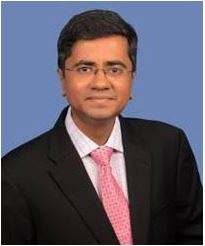
Venkataraghavan Srinivasan
Global Head of Private Funds
Our private capital operating model of the future suggests 18 steps to a highly effective back office. Here’s the thinking behind it.
Our Halo Framework proposes 18 steps to building the private capital operating model of the future.
If that sounds like a lot of work, we should emphasise that it’s a framework, not a straitjacket.
Private capital firms are at different stages of development and face different challenges. Some won’t have the means to incorporate every step; others won’t have the need.
But there’s value in a holistic view of the ideal operating model. It shows what can be achieved in time, even if you only need help–for now–in one or two specific areas.
With that in mind, let’s explore the reasoning behind our 18-step approach and how each step builds towards the whole.
Private capital operations: a key differentiator
First, why did we see the need to create an ideal operating model?
We conducted a survey of more than 150 private capital leaders and found a general anxiety around the effectiveness and scalability of operations.
A majority of respondents said that revamping middle- and back-office operations is among the top two strategic priorities for their firm in the next two years.
In other words, we found that operations have taken on new significance in private capital.
As firms look to scale in a world of increased oversight, growing investor scrutiny, and more complex deal-making, efficient operations have become a key differentiator.
Laying effective foundations
In response to those pressures, we propose implementing best-practice processes in six core areas. They are:
- People
- Processes
- Technology
- Partnerships
- Governance
- Strategy
Within each of those broad categories we suggest three areas of focus. We believe private capital firms that develop efficiency in each will lay the foundations for a highly effective operating model.
At the same time, we have very consciously created a framework rather than a template.
Firms can vary greatly in terms of size, strategy, investor base, and global coverage. All these factors affect operations. One size does not fit all.
For that reason, our model allows for a layer of customisation on top of these 18 foundational steps. Any model can only go so far. Managers will tailor these suggestions to their own specific circumstances.
The challenges facing private capital operations
So how does our model work? You can find a full research-based rundown of the theory and methodology behind it in our complete report.
But to simplify, we aim to build a highly effective operating model from the ground up, by identifying the challenges private capital managers currently face and tackling them head on.
For example, 42% of our respondents say they are facing extreme difficulties in finding the right operational talent. Private capital is facing an acute people problem.
Though firms will face different challenges depending on where they are based–among other factors–our model suggests strategies that are applicable across the board.
In this instance, we talk about the need to hire able generalists from all backgrounds, and then develop skills and knowledge with a tailored talent management strategy.
We talk about staff rotation that fully immerses employees in different value streams, creating experience that is both wide and deep.
We propose a knowledge-exchange system that makes information sharing dynamic and ensures continuity of service, regardless of circumstance.
Building blocks to better processes
The wider point is that the six categories complement each other. For instance, most of our respondents identified issues with data and technology.
Those issues won’t be solved without an effective talent management strategy, and probably by nurturing effective partnerships (another of our categories).
Technology naturally leads into embedding streamlined, scalable processes–because doing so requires the kind of effective data management that allows for process automation.
Then, through outsourcing, governance, and strategy, our 18 steps build to an effective whole.
Having said that, it’s not all or nothing. Firms don’t need to implement every step. Some will already be further down the road than others, while others will have specific challenges that take priority.
But everyone can use the framework to address issues in their operations, and gradually build a more futureproof operating model over time.
Why Intertrust Group?
- Our Halo Framework identifies and describes a next-generation fund operating framework for private capital. Download it here.
- As a strategic partner, we offer a full-spectrum service tailored to meet all back-office needs throughout the lifecycle of a private capital fund.
- Intertrust Group has 70 years’ experience in providing world-class trust and corporate services to clients around the world. Intertrust Group has been acquired by CSC, the world’s leading provider of business, legal, tax and digital brand services, worldwide.